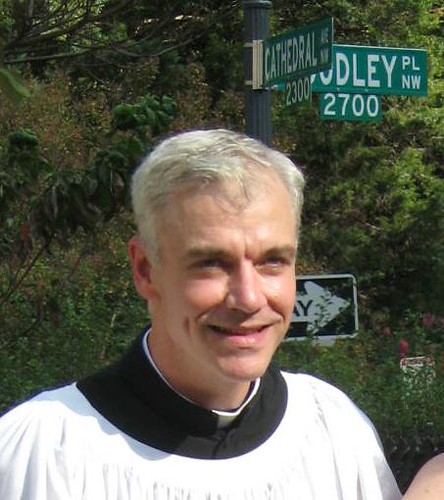Easter Vigil
A sermon for the Great Vigil of Easter, April 3, 2010. The Gospel reading is Luke 24:1-12.
Between the draught of last spring and summer, and the blizzards of this winter, several of us thought we would lose one of the little dogwood trees just outside the tower door of the church. Last summer, we nursed them along, pulling hoses and pouring pitchers of water whenever Mother Nature seemed to be otherwise occupied. It seems like they’re going to make it.
Maybe you are like me in watching the trees especially closely this spring—watching them to see if they are really going to pull through. Is a particular misshapen and storm-damaged tree just taking a while to recover from winter shock, or is it dead? For a tree that lost much of itself through storms or pruning, is there some chance of late recovery? With a few straggly trees along the Woodley Place side of the church, the city helped make that decision. They cut down one dying tree and removed another one that seemed beyond repair. And then, a small miracle—the city planted three new trees, staked them up, fertilized them, mulched them, and gave them some municipal equivalent of a blessing.
It’s a tricky business trying to decide whether a tree is dead, and then needs to be removed or replaced, or room cleared for something new to grow. It can be a painful thing. It can change the way things look, the way things feel, even the way we feel, if the tree has become something we’re used to seeing and having near and enjoying. As difficult as it can be to let a tree die and move on, it’s (of course) even more difficult to acknowledge death in such a way that makes room for new life.
But that’s just what happens in this Easter Gospel. Some of the women, Mary Magdalene, another Mary, Joanna, and some of the others, come to the tomb where Jesus has been buried. They find the stone rolled away. They had imagined finding things differently. They had thought they would find the dead body of Jesus.
They had pictured it all differently, and so what they saw was like trying to recover from a storm. Are their eyes playing tricks on them? Is this death, or is it not? Or is this a strange kind of death, different from what they had supposed. The angels who stand there break the silence asking, “Why do you look for the living among the dead? He is not here, but has risen.”
But we can understand why the women are there. They are at that odd place between naming death, and being aware of some new kind of life. Sometimes we call this shock. Sometimes it’s denial. Sometimes this awkward time is simply covered up with business or compulsion or fantasy. But the women on that Easter morning, and the other disciples too, for the new few days, (perhaps the next 50 days of Eastertide, perhaps the next two thousand years) will continue to try to understand what it means in God’s creation for some things to die so that others may find new life.
Sometimes ideas need to die. They need to fall away, or be revised, or be drastically changed. Sometimes projects—though they may be loved, even a little bit worshipped—projects need to be dropped. Sometimes attitudes need serious adjustment. They need to die. Sometimes particular jobs, or skill sets, or tasks need to wind down to their logical resting place. Sometimes (though less often than our society supposes) relationships come to an end. Or, perhaps relationships need to be re-negotiated, in order to gain new life and growth.
I have a friend named Al Johnson, who is the rector of St. Michael’s Church in Barrington, Illinois. Al has a somewhat corny, but wonderfully perceptive and faithful way of talking about the most significant relationship in his life. He explains that he’s been married to the same women three times. Three times, but with no divorce. They have an amazing relationship, and now, as Al looks at retiring, I bet he’s soon going to be saying that he’s been married FOUR times to the same women, because as he changes his patterns and habits and values, it’s only natural that some aspects of their (third) marriage will die, so that aspects of their fourth marriage can begin.
We’ve seen death in New Orleans, and we’ve seen death in Haiti. But we’re also seeing signs of new life. In parts of Washington, DC, there has been too much death, but in some places, there are also signs of new life.
What about YOUR life? If you were to be totally honest, if you were to see God face-to-face this holy night, what is it in your own life that really needs to be understood as staying in the cave, that place where history is frozen, where life is stagnant, that place of non-growth?
And at the same time, where might you hear the holy angels of God suggesting you look for new life?
Why do we look the living among the dead? Why indeed?
Faith in Jesus Christ is not so much about accepting historical precepts, or affirming traditional beliefs. Instead, Christian faith that is dynamic and alive and growing is about risking day-to-day contact with the living Christ, who might just lead us into anything!
The risen Christ changed the lives of his family, his friends, and his disciples, and he changes lives still.
May we be filled with the Resurrected Life of Christ and charged with the energy to choose light over darkness, faith over despair, and life over death.
In the name of the Father, and of the Son, and of the Holy Spirit. Amen.



No comments:
Post a Comment